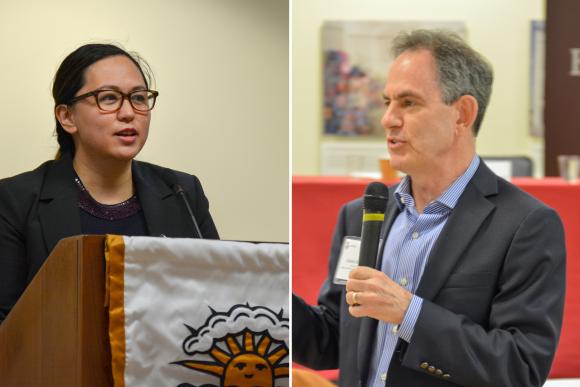Yet the biggest presence on campus, undoubtedly, is the thousands of young people who come to Brown to participate in learning, leadership and athletics opportunities through the University’s vast array of programs for students not yet in college. This year, more than 8,000 students will journey to campus from all 50 states and 74 countries. Most of them will live on campus for between one and seven weeks.
The majority of participants are high school students who live and learn on Brown’s campus as part of Summer@Brown, choosing from more than 300 non-credit courses that represent the range of the University’s undergraduate curriculum. Adrienne Marcus, associate dean for pre-college and undergraduate programs at the School of Professional Studies (which runs Brown’s pre-college programs) says that outside of class, students experience the independence of college life and participate in a full program of events and activities.
“One of the benefits of having thousands of students on campus is that these same students truly get a feel for what attending college feels like,” Marcus said.
Many aspects of the program mirror the first year of college, offering students the chance to navigate new experiences — from living with a roommate to taking challenging courses with students from varied personal and educational backgrounds — within a safe and supportive environment, Marcus says.
“Participants leave Brown with a sense of self-confidence about their abilities to succeed in new settings by working hard, pushing themselves a bit out of their comfort zone and gaining new experience and knowledge by doing so,” she added.
Increasing access to pre-college programs is central to Summer@Brown’s mission, Marcus says. Last year, students received more than $1.6 million in scholarships; this year, Brown will offer a similar level of scholarship funds. And over the past year, the University has worked closely with the Providence Public School District to enroll more local students, resulting in more than six times the number of participating students from the Providence district compared to last year.
“The pre-college space is one where we can provide incredible opportunities to students who may not know about them or who think that these experiences are not for them,” Marcus said. “Even though we often talk about access in terms of providing opportunities to students who wouldn’t normally be able to take part in them, it’s not a one-way street. It also provides important insight to students who do have easier access to these opportunities, exposing them to many more diverse experiences and perspectives. Having students from a broad range of backgrounds enriches the whole community.”



